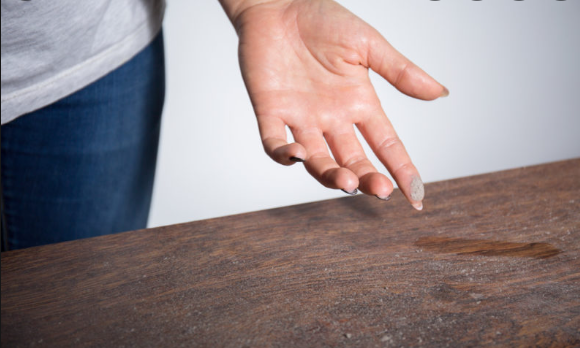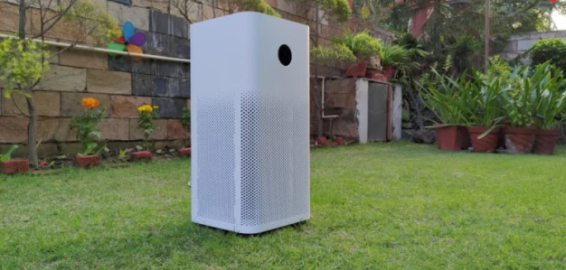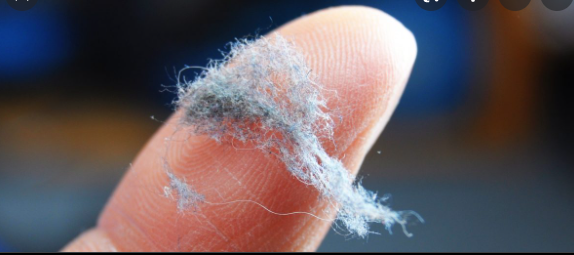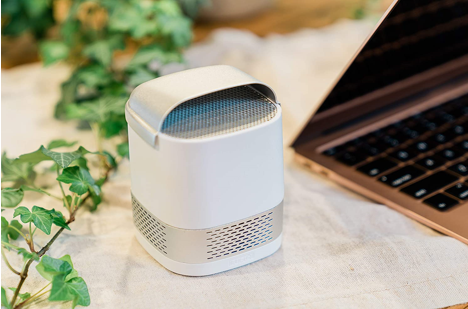An air purifier, filters the air but can air purifier remove dust too? Let’s get to know.
Cleaning the home is a really tiring task especially when you have to pick up everything and clean or vacuum it. Other than that, in case you are allergic then you are more likely to encounter respiratory issues that might get triggered. To minimize the risk and cope with the respiratory issue, it is better to have an air purifier as an essential part of your home.
As per our research, here is what we have found about the benefits of having an air purifier at home.
How Can Air Purifier Remove Dust?

The majority of home dust is made up of our own skin cells that we shed while doing chores or during sleep. However, in reality, this is obvious that we do not shed this many dead cells the exact composition of indoor dust varies in every household.
It is determined by a variety of factors like the number of people and pets living in the home, the external environment, and even how meals are generally cooked and consumed.
However, for the most part, dust is composed of particles that originate outside.
By adding an air purifier to a room, many of these particles will be captured before they have a chance to settle, not only making the air more pleasant to breathe but also decreasing dust collection on our tabletops, bookshelves, and bookcases.
A genuine HEPA filter is the most critical instrument for dust removal. These filters protect against small radioactive particles, and their effectiveness in eliminating particles from the air led to their commercial usage in filters and vacuums.
How a HEPA filter fights dust Particles?
The majority of air purifiers possess HEPA filters as a necessary component due to their efficiency alone.
The HEPA filter is rated to collect particles as tiny as 0.3 microns with 99.97 percent effectiveness, but it may also capture many bigger and smaller particles.
The 0.3-micron size was chosen since it is both the smallest and the largest size available.
An air purifier circulates the air in a room, sucking up all of the small particulate particles floating in it, including dust. The air flows easily past the filter, but the particles become caught in the fibers. These particles that get captured are the same ones that would have created dust on household surfaces or caused allergy or asthma problems if breathed. Although an air purifier cannot entirely eliminate particles, it can give a considerable decrease in home dust with continuous usage.
Can an air purifier filter the outdoor air?

Non-organic air contaminants, such as the VOCs can sometimes come from outside your house. In building fires, there are several circumstances in which high amounts of smoke inhalation might result in cyanide poisoning. That makes you think can air purifier remove dust. Well, the answer to it is yes.
In general, outdoor pollution, smoking, or transient poor air quality aren’t persistent issues for onlookers.
Other air purifiers utilize ionizers to attract particles like static electricity – negative ions bind with dust and allergens and cause them to settle out of the air.
If you want to buy an air cleaner with ionizers, be sure it doesn’t create ozone. This gas is made up of three oxygen atoms that are typically advertised as helping break down pollutants, because ozone maybe a lung irritant and worsen asthma symptoms. Typically, ozone air purifiers will have that stated on the package or in the marketing materials.
How often should I change the filters of the air purifier?
There is no specific time limit for that as it totally varies depending on the type of purifier and how it is used. Some filters are reusable and washable, but they require careful maintenance and aren’t generally found on the most effective air purifiers.
In general, reusable filters are better at eliminating bigger particles from the air, such as dust mites and pollen. There are other UV (ultraviolet light) filters on the market that promise to eliminate biological contaminants such as mold or bacteria, although many of these require higher wattage and longer exposure to be successful (not to mention some bacteria is UV-resistant).
Dust particles and purifying filters

An appropriate alternative is to use a mechanical filter, such as HEPA, which is designed to remove particles from the air, as long as the filters are routinely replaced when they get clogged with particles. The Molekule air purifier, which includes PECO technology, is another more powerful alternative. Molekule outperforms other technologies due to its ability to remove contaminants such as allergens and VOCs.
However, the appropriate type of purifier can handle any ambient air quality in your area. Using neighboring wildfires as an example, that a HEPA filter-equipped purifier is your best bet. Anything with a genuine HEPA filter in it is certainly sufficient to filter out most of the big particles that would be problematic. The majority of the smokey scent will also be remedied.
What are the alternatives for improving the air quality?
The greatest approach is to address the root of the problem and ventilate your home. If you want to complement the work of an air purifier or test if you can live without one, we recommend attempting the following measures to help minimize indoor air irritants
1. Keep the windows open
When it is safe to do so to avoid locking pollutants within rooms (particularly while air purifiers are not in use!). If feasible, open windows on opposing sides of the room to create a greater cross draft.
2. Vacuum Frequently
Try to use the vacuum which has a sealed and HEPA-certified bag because they are way more efficient in cleaning the dust than making them float in the air.
1. Cleaning the air filters regularly
Make sure to clean the filters regularly as it will improve the effectiveness of your air purifier. There are some models that have washable filters. All you have to do is wash the filters with lukewarm water soapy water.
2. Using the exhaust fan
Try to install an exhaust fan in the kitchen and other laundry areas. It will help to take out the burners and other smoke from your house.
3. Limit or minimizes the usage of candles
Lighting wood or candle contributes to a variety of air impurities from particles to smoke. Try to avoid using such materials inside your house to improve and maintain the air quality of the home.
Conclusively,
Speaking directly about the can an air purifier remove dust then the precise answer is YES. Whatever the type of dust is, an air purifier filters it effortlessly with the powerfully installed filters that it has.
In this guide, I have personally searched and added how it does that and other alternatives to remove the potential dust particles to make the indoor environment healthier.
